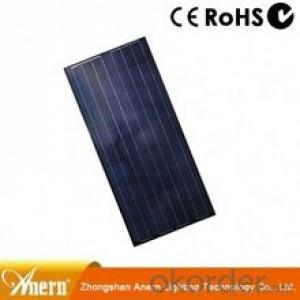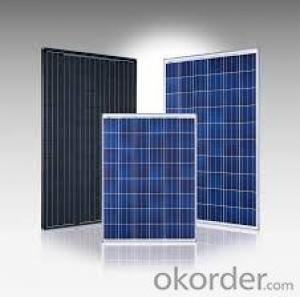Solar Cells Poly 3BB with Lower Price AB Grade
- Loading Port:
- Shanghai
- Payment Terms:
- TT or LC
- Min Order Qty:
- 30000 pc
- Supply Capability:
- 1000000 pc/month
OKorder Service Pledge
OKorder Financial Service
You Might Also Like
Electrical Characteristic
Efficiency (%) | Pmpp (W) | Umpp (V) | Impp (A) | Uoc (V) | Isc (A) | FF (%) |
17.25 | 4.197 | 0.524 | 7.992 | 0.62 | 8.458 | 80.03% |
17 | 4.137 | 0.524 | 7.876 | 0.619 | 8.353 | 80.01% |
16.75 | 4.076 | 0.522 | 7.81 | 0.617 | 8.286 | 79.73% |
16.5 | 4.015 | 0.518 | 7.746 | 0.613 | 8.215 | 79.73 |
16.25 | 3.955 | 0.515 | 7.683 | 0.61 | 8.144 | 79.61% |
16 | 3.894 | 0.512 | 7.613 | 0.608 | 8.075 | 79.31% |
15.75 | 3.833 | 0.51 | 7.534 | 0.605 | 8.058 | 78.62% |
15.5 | 3.772 | 0.508 | 7.453 | 0.604 | 8.02 | 77.87% |
15.25 | 3.771 | 0.505 | 7.35 | 0.604 | 9.997 | 76.83% |
15 | 3.65 | 0.503 | 7.271 | 0.604 | 7.989 | 75.64% |
14.5 | 3.529 | 0.499 | 7.067 | 0.604 | 7.988 | 73.14% |
14 | 3.407 | 0.499 | 6.833 | 0.604 | 7.833 | 72.01% |
Intensity Dependence
Intensity [W/m2] | Isc× [mA] | Voc× [mV] |
1000 | 1.00 | 1.000 |
900 | 0.90 | 0.989 |
500 | 0.50 | 0.963 |
300 | 0.30 | 0.939 |
200 | 0.20 | 0.920 |
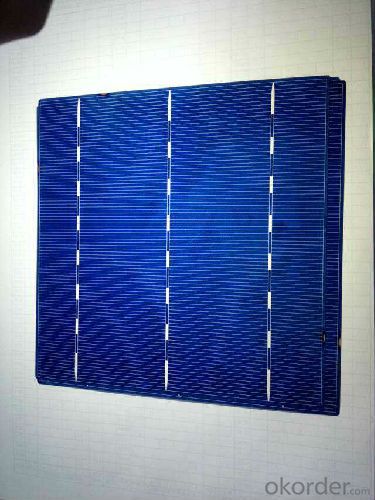
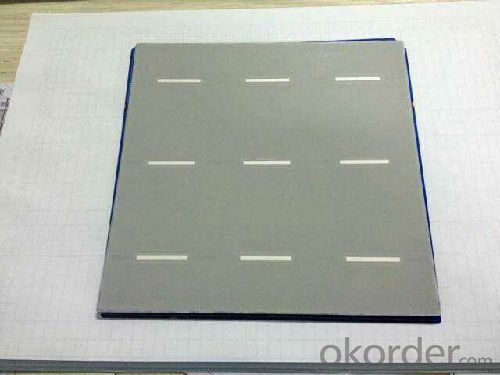
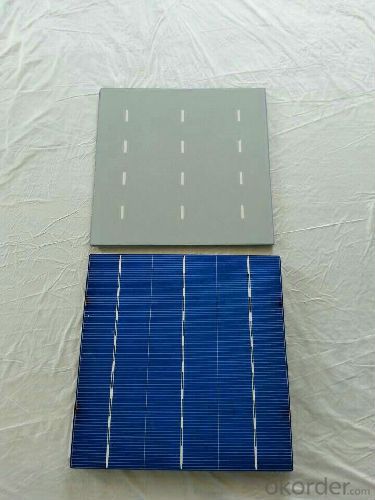
Advantage Of Poly Solar Cell 156mm
1: High quality cell, Level A cell (14%—17.5%)
2.Dimensione:156*156mm Diagonal:200mm
3: Qualified certification: TUV,CE certification.
4: Warranty: five years for whole unit
Photovoltaic cells are made of special materials called semiconductors such as silicon, which is currently used most commonly. Basically, when light strikes the cell, a certain portion of it is absorbed within the semiconductor material. This means that the energy of the absorbed light is transferred to the semiconductor. The energy knocks electrons loose, allowing them to flow freely. The third generation of solar cells includes a number of thin-film technologies often described as emerging photovoltaics—most of them have not yet been commercially applied and are still in the research or development phase. Many use organic materials, often organometallic compounds as well as inorganic substances. Despite the fact that their efficiencies had been low and the stability of the absorber material was often too short for commercial applications, there is a lot of research invested into these technologies as they promise to achieve the goal of producing low-cost, high-efficiency solar cells.
- Q:How to define the poly solar cells as the A Grade one?
- A Grade poly solar cell is used in large power plant while B grade is for consumer usage for daily life
- Q:Does solar cell cost less than the other power generation technology?
- Yes, it cost much less than the traditional power generation technology.
- Q:Can solar cells be used in water?
- Yes, solar cells can be used in water. Some solar panels are specifically designed to be used in water environments, such as floating solar panels used in reservoirs, lakes, and other bodies of water. These panels are waterproof and can efficiently generate electricity even when partially submerged.
- Q:Solar cells and the difference between ordinary batteries. Why is the solar cell is converted into electrical energy, zinc battery is what is converted into chemical energy
- The so-called chemical energy, in fact, is "chemical potential". Can be released through the oxidation-reduction reaction of energy, into other energy. This is the release of chemical energy.
- Q:How do solar cells perform in extreme weather conditions?
- Solar cells can generally perform well in extreme weather conditions. However, extreme heat can cause a slight decrease in their efficiency, while extreme cold temperatures can reduce the power output temporarily. Additionally, severe weather events such as hailstorms or strong winds may damage the solar panels if they are not properly installed or protected. Nonetheless, solar cells are designed to withstand these conditions and continue to generate electricity, making them a reliable and sustainable energy source even in extreme weather.
- Q:How do solar cells handle power fluctuations?
- Solar cells handle power fluctuations by using a device called an inverter. The inverter converts the direct current (DC) produced by the solar cells into alternating current (AC) that is suitable for use in homes and businesses. It also helps to regulate and stabilize the power output, ensuring a consistent and steady flow of electricity despite any fluctuations in sunlight intensity or changes in load demand.
- Q:What is the largest solar cell installation in the world?
- The largest solar cell installation in the world is the Tengger Desert Solar Park in China, with a capacity of 1.5 gigawatts.
- Q:Can solar cells be used in electric fence systems?
- Yes, solar cells can be used in electric fence systems. Solar panels can generate electricity from sunlight, which can then be stored in batteries and used to power electric fences. This eliminates the need for a connection to the main power grid and makes electric fence systems more flexible and cost-effective in remote areas.
- Q:Can solar cells be used for powering electric vehicles in motion?
- Yes, solar cells can be used for powering electric vehicles in motion. Solar panels can be installed on the roof or any other surface of the vehicle to harness sunlight and convert it into electricity. This electricity can be used to charge the vehicle's batteries while it is moving, supplementing the power from the grid or reducing reliance on it. However, the efficiency of solar cells and limited surface area on vehicles may pose challenges in meeting the entire power demand of electric vehicles solely through solar energy. Nonetheless, solar technology has the potential to contribute to the overall power supply of electric vehicles, making them more sustainable and reducing their carbon footprint.
- Q:What are the short-circuit currents of solar cells affected by the factors?
- The size of the suede, the uniformity, the depth of diffusion, the film thickness of the PECVD, the printing condition of the screen and the sintering conditions,
1. Manufacturer Overview |
|
|---|---|
| Location | |
| Year Established | |
| Annual Output Value | |
| Main Markets | |
| Company Certifications | |
2. Manufacturer Certificates |
|
|---|---|
| a) Certification Name | |
| Range | |
| Reference | |
| Validity Period | |
3. Manufacturer Capability |
|
|---|---|
| a)Trade Capacity | |
| Nearest Port | |
| Export Percentage | |
| No.of Employees in Trade Department | |
| Language Spoken: | |
| b)Factory Information | |
| Factory Size: | |
| No. of Production Lines | |
| Contract Manufacturing | |
| Product Price Range | |
Send your message to us
Solar Cells Poly 3BB with Lower Price AB Grade
- Loading Port:
- Shanghai
- Payment Terms:
- TT or LC
- Min Order Qty:
- 30000 pc
- Supply Capability:
- 1000000 pc/month
OKorder Service Pledge
OKorder Financial Service
Similar products
New products
Hot products
Hot Searches
Related keywords










